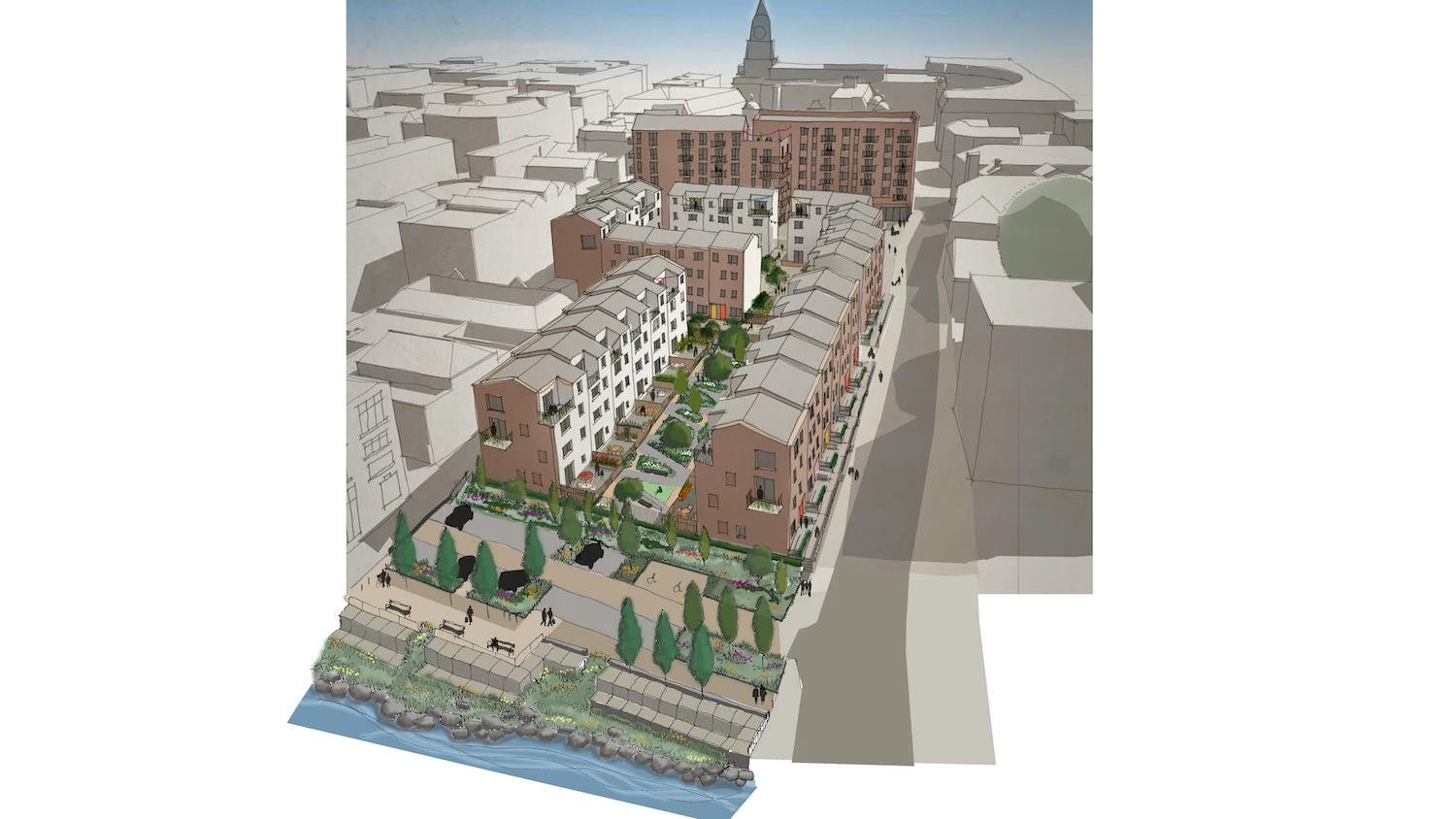
Partner Article
CW Studio designs a landscape masterplan for a new riverside Bolton town centre development
Manchester-based CW Studio has designed the landscape scheme for a £25m residential-led 2.7 acre development in Bolton town centre for Placefirst. Planning permission was unanimously granted in March for the Central Street development and the work will begin this autumn.
Working closely with Levitt Bernstein Architects, the CW Studio team designed a new public square, a river walk along the Croal and shared gardens and roof terraces for residents. The Croal Valley project is part of a larger £1bn town centre regeneration scheme for Bolton, and consists of 228 homes and 8,500 sq m of office space.
Carolyn Willitts, director at CW Studio, said: “This is such an exciting project for Bolton and will completely transform an unloved part of the town centre. This has been a really special project for us to work on, with opening up the river area and creating new public spaces for people to enjoy for generations.
“Ecologically, we’re thrilled to be able to design in native riverside planting and trees, which will help the restore the river, manage its flow and bring wildlife back to the area as well.”
Max King, director of projects at Placefirst, said: “Landscape design, and its practical application, is one of the most important factors of a successful ‘Build to Rent’ community, now so more than ever. It is a key element for any scheme that addresses two of society’s greatest challenges: the health of our planet and the health of our people.
“Through the creation of spaces that support biodiversity, water management, mental and physical well-being, and civic pride we are able to offer people great places to call home now and far into the future. At Central Street, CW Studio have created exactly those spaces and we have been delighted to work with them on this exciting, transformation project.”
The new Central Street neighbourhood allows for social interaction within the public realm and shared courtyards with spaces to meet and chat and for informal play. The improvements proposed for the wider streetscape aim to create a more pleasant experience for residents and those using streets to walk or cycle into the town centre.
The materials palette for the scheme ties the architectural proposals with the rest of Bolton town centre including, natural stone slab and sett paving to the square which is part of the Deansgate Conservation Area. New specimen street trees are found across the neighbourhood with rain gardens and contemporary street furniture.
The design creates a physical connection with the forgotten River Croal which includes the restoration of a modified channelled river and creation of a new river walk. By opening up the steep riverbank, it will enable better visual access for the public as well as wildlife through the planting of native species. The plans include a gabion retaining wall, as well as rain gardens and new tree planting and is part of a proposed public path will lead from the town centre to Queens Park.
For the private residential areas, the landscape masterplan includes small private gardens for ground floor residents which open onto shared communal gardens. These spaces have communal tables for gatherings, quieter spaces among planting and lawns to stretch out on. Two roof terraces provide further social spaces where residents can meet for coffee, hold events or to take part in a yoga class. The proposed planting across these spaces aims to provide colour, texture and scent throughout the year and includes multi-stemmed trees, evergreen shrubs, flowering perennials plants, ornamental grasses and fern with spring and summer bulbs.
Gillian Harrison at Levitt Bernstein Architects added, “This project will create a residential community in the heart of Bolton and make a significant contribution to the public realm of the town centre, including its emerging riverside. The CW Studio team were quick to understand our design aspirations and the ease of collaboration meant the architecture and landscape evolved in tandem to the great benefit of the overall design.
“The resulting proposal sensitively responds to its context and creates a variety of external spaces, both at ground level and elevated within the buildings, that will make a huge contribution to the lives of future residents.”
This was posted in Bdaily's Members' News section by Carolyn Hughes .






 A legacy in stone and spirit
A legacy in stone and spirit
 Shaping the future: Your guide to planning reforms
Shaping the future: Your guide to planning reforms
 The future direction of expert witness services
The future direction of expert witness services
 Getting people into gear for a workplace return
Getting people into gear for a workplace return
 What to expect in the Spring Statement
What to expect in the Spring Statement
 Sunderland leading way in UK office supply market
Sunderland leading way in UK office supply market
 Key construction developments in 2025
Key construction developments in 2025
 Mediation must be part of planning process
Mediation must be part of planning process
 From apprentice to chief financial officer
From apprentice to chief financial officer
 Don't stifle growth with apprenticeship cuts
Don't stifle growth with apprenticeship cuts
 The start-up landscape: What lies ahead in 2025
The start-up landscape: What lies ahead in 2025
 JATCO adds welcome drive to automotive sector
JATCO adds welcome drive to automotive sector